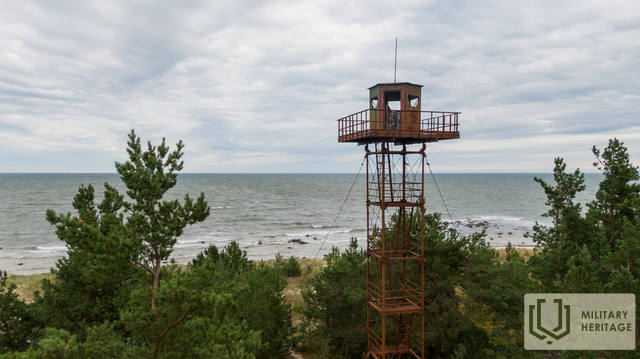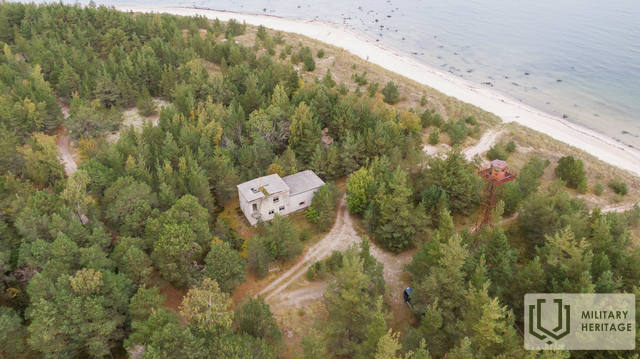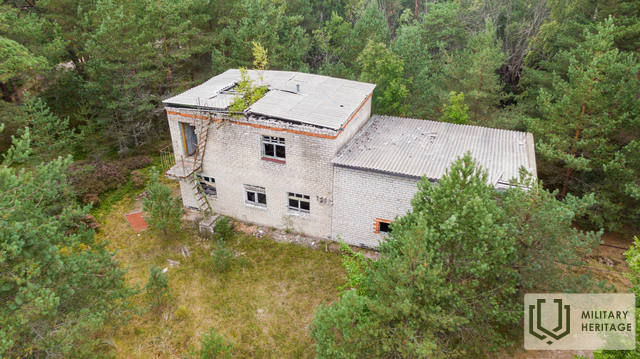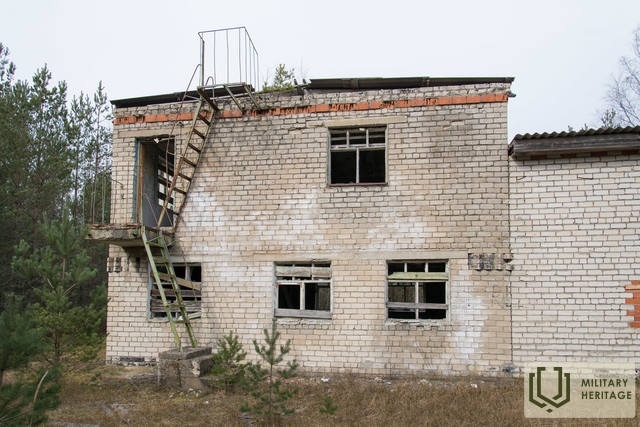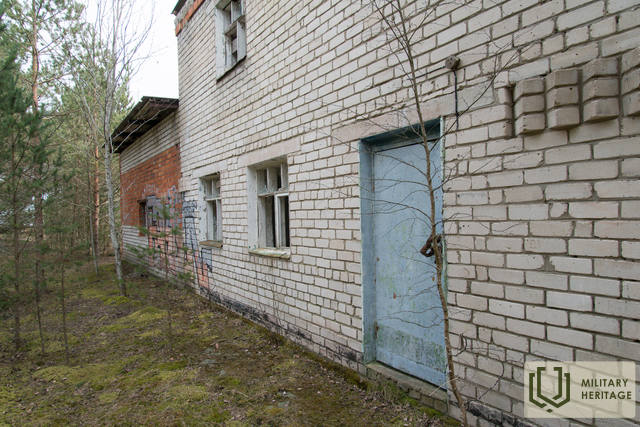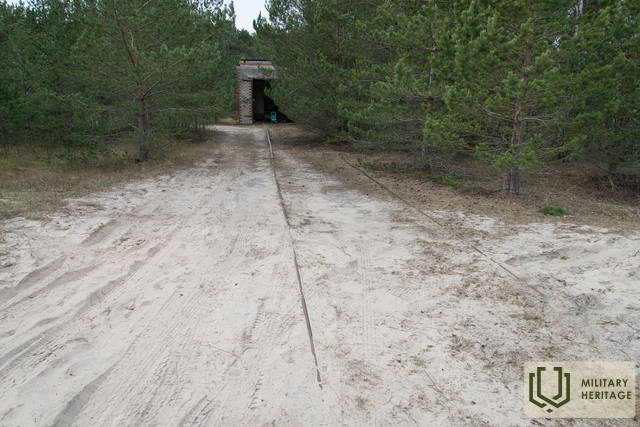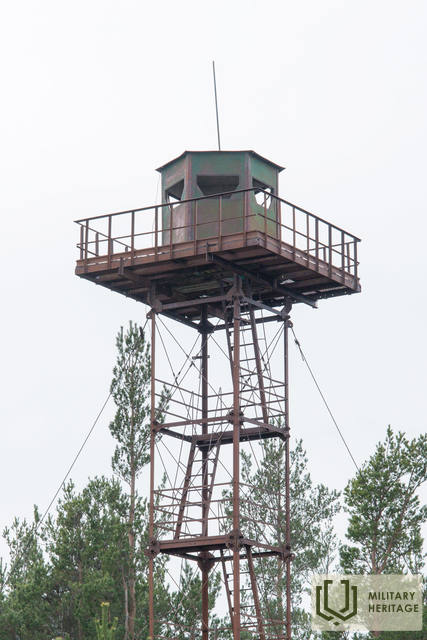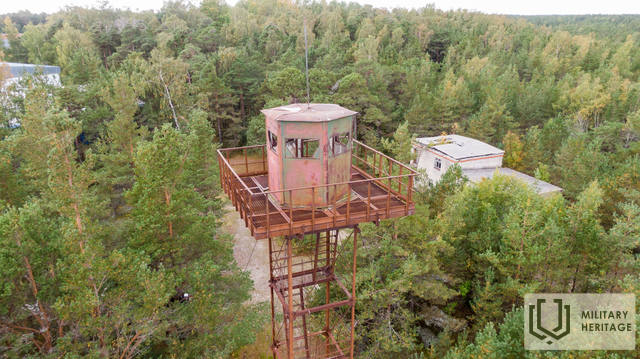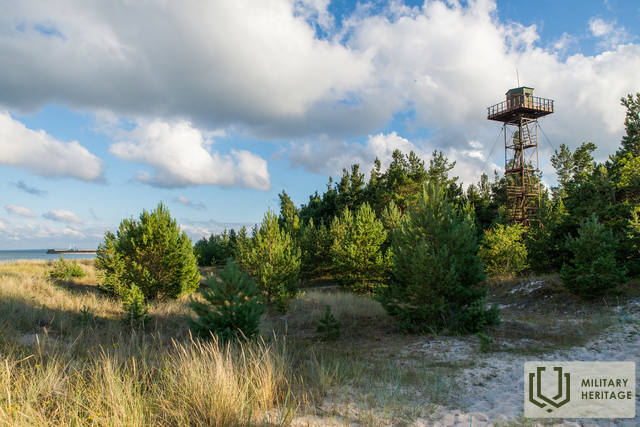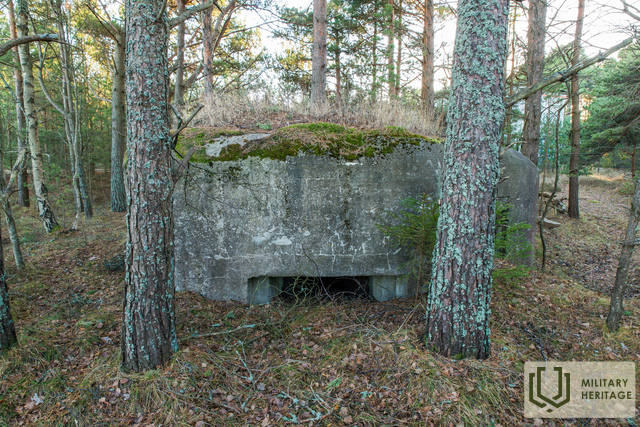The Technical Observation Post at the Cape of Lehtma
Military equipment

In 1945 the whole of Hiiumaa became a closed border zone. There were border guard stations all over the island until 1953, later there were no stations by the inland sea (between Sõru and Heltermaa). In 1950 there were two commandant’s headquarters in Hiiumaa (Kärdla and Putkaste), 12 stations (Kuri, Kärdla, Lehtma, Mudaste, Otste, Luidja, Kõpu, Kalana, Õngu, Haldi, Emmaste, Putkaste) and Heltermaa checkpoint. In 1955 a 12-metre wide zone was allocated for the construction of border structures (border strip) on the coast from Hellamaa to Tilga village.
Passage to Hiiumaa went through border checkpoints at Heltermaa Port and in Putkaste Airfield, from 1964 in Kärdla Airfield.
Kärdla commandant’s headquarters had its field training centre with a shooting range in Paope. There were training fields, shooting ranges and helicopter pads at stations.
Up to the 1970s there were plowed up border strips with wire fences on the coast of Hiiumaa, their remains can be still spotted on Tahkuna and Kõpu Peninsulas. Barbed wire was often attached to trees. In the 1980s a seismographic alarm system, responding to man’s steps was tested on Mägipe coast but it turned out to be inefficient on a stormy coast. On the coast between Tahkuna and Lehtma there are plenty of sand-lime brick weapon pits. The whole border zone along the coast was covered by a telephone line. Approximately each seventh pole had a socket attached where the patrolmen were able to connect the telephone receiver and get in touch with the station. In the 1980s the overhead lines were replaced by ground cables.
Over time, there have been over 50 border guard watchtowers on the coast of Hiiumaa. The watchtowers used to be at border guard stations, near technical observation posts and the searchlight poles. Technical observation posts included ship radars, searchlights (diametre up to 200 cm), night watch devices and binoculars and as a rule a two-device diesel power station. The searchlight poles had no stationary radars, searchlights could be mobile. The number of technical observation posts and searchlight poles in Hiiumaa was no less than 15. In addition, from the 1980s each station possessed 2–6 radio location posts – sets of small buildings of different construction that were used for border observation via portable radars. Observation posts were surrounded by a barbed wire fence and an alarm wire.
By the end of the Soviet regime there were 5 stations in Hiiumaa that formed the First Commandant’s Service of the Eleventh Border Guard Detachment. The headquarters of this detachment 2133 and the other 8 stations were in Saaremaa. The stations of Hiiumaa were: 1. Suursadama (abandoned), 2. Kärdla (demolished), 3. Kõrgessaare (private property, about to be demolished), 4. Ojaküla (private property, some buildings demolished), 5. Sõru (private property, well maintained and no demolition plans). In the commandant’s service headquarters in Kärdla most of the buildings at Pargi 3 have survived but are to be demolished and replaced by a new centre of social services.
After 1992 the following watchtowers have been demolished: Tahkuna, Sõru technical observation post (TOP), Kärdla station (2003), Hirmuste TOP (2010), Kalana TOP (2014).
In 2019 10 watchtowers survive: Cape of Sääre TOP (the only old style tower, Suursadama station, Lehtma TOP (the only tower of solid metal construction), Tahkuna Military Museum (dispatched from Ojaküla station), Kõrgessaare Port, Ninametsa TOP, Palli TOP, Kõpu Lighthouse Tower (used to be in possession of the naval radio technology company), Haldi TOP and Sõru station.




